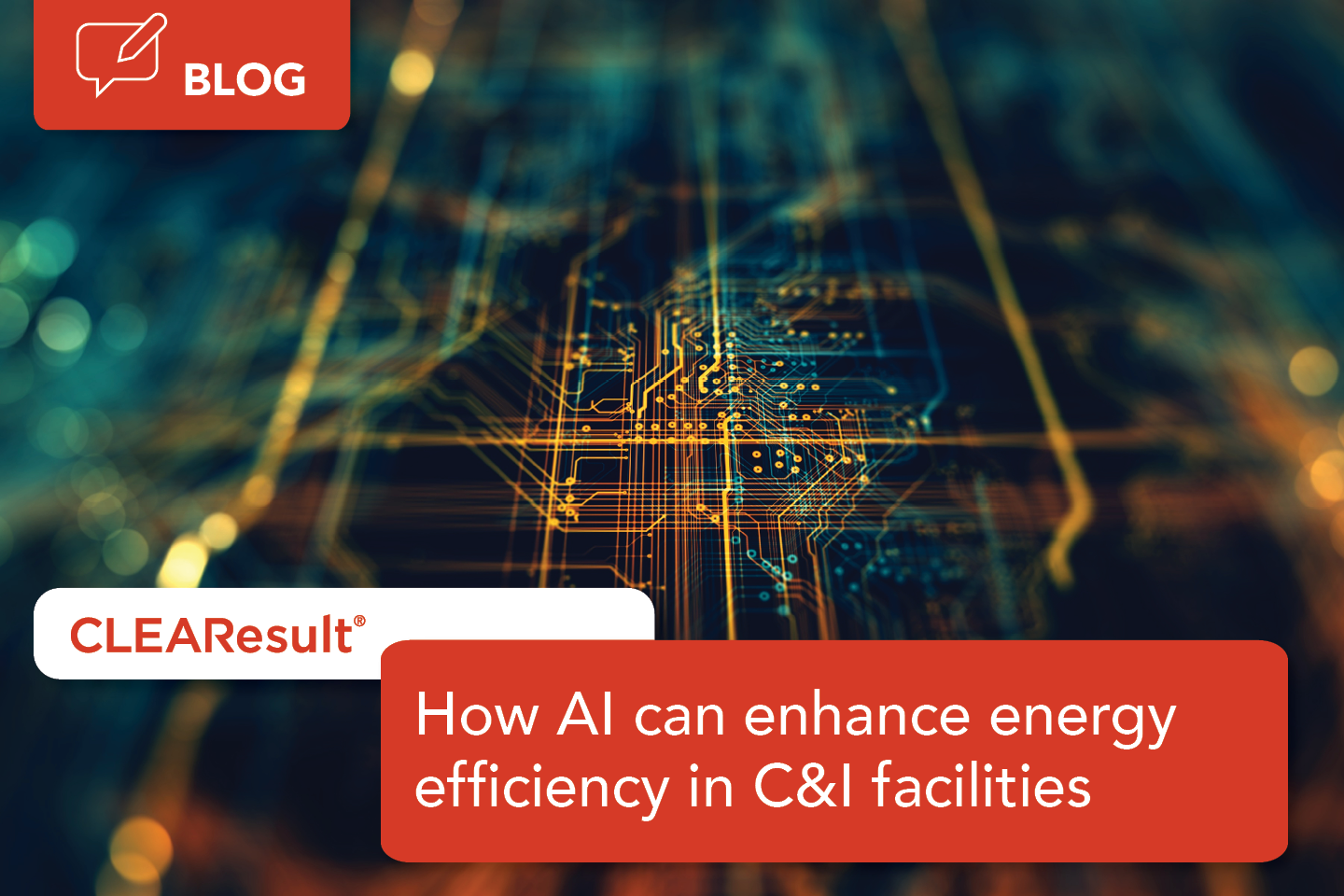How artificial intelligence can enhance energy efficiency in commercial and industrial facilities

Designing and implementing energy efficiency programs for large commercial and industrial (C&I) facilities can be as complex as the facilities themselves. With potentially millions of dollars’ worth of high-energy use equipment, round-the-clock usage and a trove of data to sift through, the opportunities for energy improvement are numerous… but often difficult or expensive to pinpoint.
As technology continues to evolve, these organizations are increasingly looking for innovative approaches to optimize their energy usage and reduce environmental impact. One such technology that is revolutionizing energy management in C&I settings is artificial intelligence (AI) and machine learning (ML). AI’s ability to analyze vast amounts of data and identify patterns holds tremendous promise for driving significant improvements in energy efficiency.
Let's explore two pilot-ready applications of AI in energy efficiency programs for C&I customers:
Chiller plant optimization
Critical facilities such as hospitals, data centers and manufacturing plants depend on sophisticated and complex chiller plants to provide year-round cooling. These high-energy use facilities are a key target for utility programs thanks to significant opportunities for energy savings. But these energy-saving opportunities come with challenges, such as:
- Hundreds of data points and inputs to monitor to ensure optimal performance
- A scarcity of contractors specializing in chiller plant performance optimization
- Plant or building operators often have many other responsibilities and equipment to monitor
- The need for ongoing fine-tuning and maintenance makes it difficult to generate prolonged energy savings
This is where AI and ML can help energy efficiency programs and building managers working with chiller plants. Hard-coded algorithms used in traditional building management systems (BMS) are generally effective, but they are no match for the analytical power of AI. New AI/ML software can quickly analyze the BMS, understand the unique operating characteristics of a site and implement specific operating measures to improve performance.
Traditional controls are effective for tackling some optimizations, but AI takes in real-time data of how a specific plant is working and enables optimization actions for its unique characteristics. The system leverages ML to execute optimization actions that are increasingly specific to the site, giving building managers nearly autonomous optimization of their facility. Additionally, the system can learn over time, which improves performance and increases energy savings by continuously optimizing systems.
AI/ML software can also provide a proactive approach to chiller plant maintenance. Rather than waiting for something to break, it can track and recognize deteriorating performance and flag it – effectively identifying losses in energy efficiency before it becomes a problem. By continuously monitoring equipment performance and predicting when maintenance is needed, businesses can prevent costly downtime and extend the lifespan of their assets.
This AL/ML solution could be a powerful tool for energy programs to offer to these facility operators. On top of enhanced energy and cost savings, it provides these facilities with additional time, insight and peace of mind that their chiller plant is running at maximum efficiency.
Energy Performance Programs
AI technology also holds exciting potential for energy performance or pay-for-performance programs. One of the most important goals of demand-side management programs is to manage the peak demand, so that load can be shifted away from peak hours, reducing the need for additional capacity on the grid. However, programs that target peak demand using manual measurement and verification (M&V) traditionally performed by engineers have high costs to delivery, due to those high labor costs. The challenge is that these programs can be expensive and time-intensive due to the engineering time required to deliver successfully.
Now, AI-driven analytics platforms can easily analyze individual building utility meter data to identify savings at the meter, allowing for energy efficiency program designs that are highly automated and able to be delivered at a much lower cost.
These AI technology-enabled programs can feature automated participant model creation and program pre-approvals, automated energy savings calculations, and automated payment processes. This approach can provide a high confidence in savings as the solution follows industry best practices for measurement and verification. This analysis provides the ability to target demand savings at specific parts of the day (enabling utilities to target locations and times where the grid is constrained) and ultimately deliver savings at a lower cost relative to traditional energy performance programs due to automation offsetting the high costs of engineering labor.
This AI analytics-based approach would be an excellent fit for utility clients with a large portfolio of commercial buildings with hourly utility data. It provides a low-cost, high-accuracy solution for targeting hourly energy savings and peak demand savings, and would be an innovative and cost-effective addition to existing C&I offerings.
Looking to the future
These two examples are just scratching the surface of the energy-saving opportunities AI can help us find in C&I settings. As building technology continues to grow in complexity and we gain more access to data, C&I facilities need better tools to analyze that data and identify solutions that save energy and money.
By harnessing the power of AI-driven technologies, utility programs can help fill that gap and help these businesses harness the power of their data, achieve significant energy savings, reduce environmental impact and gain a competitive edge in a sustainability-focused market landscape. As AI continues to evolve and mature, its role in driving energy efficiency innovations is only expected to grow, paving the way for a more sustainable and resilient future.
Contact our team of energy experts to learn more about these AI pilot opportunities and other C&I solutions.
_______________________
Katie Fotheringham is a Practice Consulting Director for CLEAResult’s Energy Efficiency Practice with a focus on commercial and industrial program designs. Katie has a Master’s degree in Industrial Ecology and over 16 years of experience in energy efficiency programs and innovation that have delivered results for hard-to-reach customers across Canada and the U.S. Katie is a keen follower of futurism and the potential for AI/ML to change how C&I customers use energy.